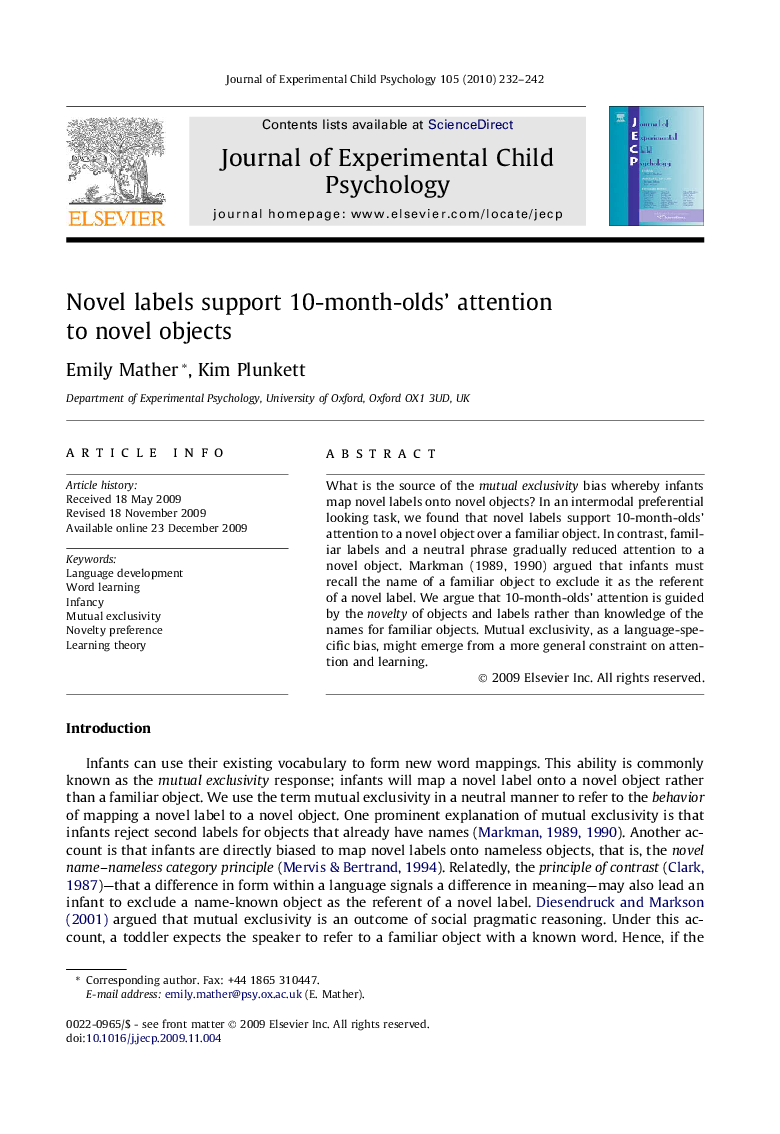| Article ID | Journal | Published Year | Pages | File Type |
|---|---|---|---|---|
| 918624 | Journal of Experimental Child Psychology | 2010 | 11 Pages |
Abstract
What is the source of the mutual exclusivity bias whereby infants map novel labels onto novel objects? In an intermodal preferential looking task, we found that novel labels support 10-month-olds’ attention to a novel object over a familiar object. In contrast, familiar labels and a neutral phrase gradually reduced attention to a novel object. Markman (1989, 1990) argued that infants must recall the name of a familiar object to exclude it as the referent of a novel label. We argue that 10-month-olds’ attention is guided by the novelty of objects and labels rather than knowledge of the names for familiar objects. Mutual exclusivity, as a language-specific bias, might emerge from a more general constraint on attention and learning.
Keywords
Related Topics
Social Sciences and Humanities
Psychology
Developmental and Educational Psychology
Authors
Emily Mather, Kim Plunkett,
